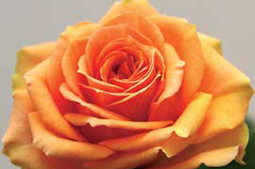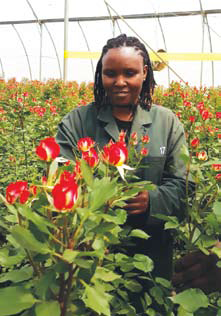Featured Past Articles
Seems to become The biggest edition yet Even though the rose industry has been under pressure over the last year, the attendance at the Naivasha Horticultural Fair does not seem to be affected. As statistics show, this year it even seems to become the biggest edition so far. “It is once again receiving plenty of bookings certainly on par with other years”, says Naivasha Horticultural Fair Chairman Richard McGonnel.
Even though the rose industry has been under pressure over the last year, the attendance at the Naivasha Horticultural Fair does not seem to be affected. As statistics show, this year it even seems to become the biggest edition so far. “It is once again receiving plenty of bookings certainly on par with other years”, says Naivasha Horticultural Fair Chairman Richard McGonnel.
The Naivasha Horticultural Fair one of the largest horticultural trade fairs in Africa and is annually being held in September. This year it is held on the 20th and 21st of September. What’s the story behind it?
Brief History
The ‘NH Fair’ was founded by a few friends who, while enjoying a beer, decided that the professional side of the agricultural sector should be put in the spotlight positively. The costs of participation are kept low, so that small farmers and horticulturists from Kenya can exhibit their product and knowledge.
 Overproduction, low demand, high fertilizer prices, VAT that isn’t refunded by the government, unfavourable exchange rates. When talking with the growers, it’s the combination of these factors that contribute to the challenging year that many Kenyan rose growers are experiencing. Notwithstanding the Kenya Flower Council predicting a 20 percent growth of value of Kenya’s flower exports over 2019, with the summer season around the corner these circumstances are not likely to improve any time soon.
Overproduction, low demand, high fertilizer prices, VAT that isn’t refunded by the government, unfavourable exchange rates. When talking with the growers, it’s the combination of these factors that contribute to the challenging year that many Kenyan rose growers are experiencing. Notwithstanding the Kenya Flower Council predicting a 20 percent growth of value of Kenya’s flower exports over 2019, with the summer season around the corner these circumstances are not likely to improve any time soon.
So, how does this situation influence the atmosphere at the NHFAIR
The challenging year is the talk of town, but growers remain hopeful. “It will separate the men from the boys”, an exhibitor says. And some see this situation as an opportunity for the growers. “It forces the growers to look at their costs and become more efficient.”
Stimulating and reflecting good practices in floriculture, the FSI Basket of standards is evolving and including additional environmental benchmarking criteria with an emphasis on reliable data and record-keeping.
Supporting mainstreaming of good practices
The additional environmental benchmarking is not a new standard nor replacing current benchmarks. It is a set of benchmarking criteria supporting the mainstreaming of environmental principles across compliance standards, strengthening the FSI basket as international reference for sustainable practices.
It is noteworthy to assert that Kisima is setting a good example of sustainable farming and innovative ways of cutting the cost of production without compromising quality and quantity in production. These practices are worth emulating as they deliver results based on what Kisima has achieved from these strategies.
 “We want to be remembered as the farm which integrated their farming systems to enable sustainability both environmentally and socially to conserve soils for the future generations while improving livelihoods of people in the community” asserted Craig General Manager Kisima Floriculture Kisima which sits at an altitude of 2400M produces large headed premium roses which are sold through the auction. They export over 20 million stems annually, being a smallholder grower with less than 30ha to survive in the sector of big giants; you have to design a unique way of operations. For this, Kisima believes in two major unique ways; cutting cost innovatively and practicing environmentally and socially sustainable farming.
“We want to be remembered as the farm which integrated their farming systems to enable sustainability both environmentally and socially to conserve soils for the future generations while improving livelihoods of people in the community” asserted Craig General Manager Kisima Floriculture Kisima which sits at an altitude of 2400M produces large headed premium roses which are sold through the auction. They export over 20 million stems annually, being a smallholder grower with less than 30ha to survive in the sector of big giants; you have to design a unique way of operations. For this, Kisima believes in two major unique ways; cutting cost innovatively and practicing environmentally and socially sustainable farming.
Kisima’s commitment to environmentally and socially sustainable farming has not only enabled them to manage their farm operations successfully but it has also attracted notable accolades for them both locally and internationally. Kisima emerged victorious for the best imported rose in the recently concluded Keukenhof awards with Rosa Hurricane has their headlining variety. They managed to get this award after growing Rosa Hurricane for one year. Rosa Hurricane variety is owned by select breeding. The judges at Keukenhof awards based their judgment on head shape, the opening of the head, the vividness of color, health of foliage, strength of the stems, distribution of thorns and vase life. Rosa Hurricane successfully checked every box to enable Kisima to claim the award.
Read more: Kisima Farm: Leading the way in Sustainable Farming
For the 8th year in a row, Kenya hosted the International Flower Trade Expo (IFTEX) at the Oshwal Centre, Parklands Nairobi.
 IFTEX which was launched in 2012 has grown tremendously to be a renowned exhibition brand worldwide. Currently it attracts more than 250 both national and international exhibitors ranging from; growers, buyers, breeders, suppliers, regulatory and compliance institutions and logistics. Over time IFTEX has contributed to promotion of Kenyan cut flowers which its demand continues to rise in world market. This action has enabled the Kenyan flowers to compete well with other giants like Ecuador, Colombia and also Ethiopia who are coming up well.
IFTEX which was launched in 2012 has grown tremendously to be a renowned exhibition brand worldwide. Currently it attracts more than 250 both national and international exhibitors ranging from; growers, buyers, breeders, suppliers, regulatory and compliance institutions and logistics. Over time IFTEX has contributed to promotion of Kenyan cut flowers which its demand continues to rise in world market. This action has enabled the Kenyan flowers to compete well with other giants like Ecuador, Colombia and also Ethiopia who are coming up well.
This year’s IFTEX show kicked off on 5th June 2019 with the chairman of HPP international exhibition group inviting exhibitors, buyers and all other participants to the event; “it is with great pleasure to welcome you the 8th edition of Kenya’s trade fair for the floriculture industry, it is without doubt the most important international trade fair for fresh flower trade” said Dick Van Raamsdonk.
The growth of IFTEX over the years has been boosted by its unique approach of reversing the culture of exhibitions across the globe. IFTEX brings buyers and growers under one roof, which makes it so special. “It is a place where you meet buyers and growers together, it is a business platform, international buyers source flowers directly from the Kenyan growers, this makes IFTEX so different “reiterated Dick Van Raamsdonk.
Read more: IFTEX SHOW: Supporting Sustainable Floriculture in Kenya
A great team start with a great leader. This involves setting goals for the team, communicating the mission, setting proper systems and standards and leading by example, Team motivation- Simple recognition of your team’s efforts and celebrating their achievement can go a long way.
 Who is Nancy Kurgat? Describe yourself as concisely as you may.
Who is Nancy Kurgat? Describe yourself as concisely as you may.
Nancy Kurgat is the production and technical manager, Sian Agriflora. She is also a team leader and has over 15 years experience in the floriculture sector. She has a training in Horticulture (Egerton University), Business & strategic management (Moi University) and several in job trainings on supervisory and leadership among others. Over the years, she has grown and progressed through the ranks from supervisory level to management level.
Ladies have a natural affinity for the world of flowers, and show much greater appreciation for it than men do. Even then, very few go about establishing their careers in the flower production industry, like you have done. What spurred you to do so? Any role model or someone who inspired you?
My role model in the industry is Mr Andrew Wambua, the General Manager of Molo River who was my boss when I first joined the industry at Equator flowers. I attribute a lot of my success to the first trainings and mentorship I attained from him. I cannot forget our Chairman Mr. Micah Cheserem whose leadership really inspired and geared me to another level of leadership and creativity. I have not words to express my gratitude other than a big thank you.
In addition, it has been noticed by men of all ages is the affinity of women towards flowers; the freshness, gorgeousness and the innocent blooms have always been a dire favourite of women. Even with this love for flowers women perceived the career as hard for to pursue because of the associated obstacles for instance, growing is tasking and needs a lot of commitment in terms of time. Most women will wish for careers that ensure they are home early and over the weekends to take care of the family.
I joined the industry immediately after I cleared my studies and I must say that I also had the same reservations but after working for some time I realized that I enjoyed more than I thought! I cheered myself that, “YES, I CAN, and will be, a significant part of the floriculture industry in spite of all the obstacles."
A trade show is a big investment of time, money and energy, and you may be asking yourself: is it even worth it? With the rise of digital and online events, YouTube and social sharing, traditional trade shows can feel outdated and inefficient.
However, trade shows are still the one of the best ways to make an impression with a relevant audience. According to the 2017 report from the Content Marketing Institute, 68% of B2B marketers utilize in-person events as part of their marketing strategy, and 36% of them say the events are effective. While trade shows may no longer be top dog for B2B marketers, they are still one of the five most critical tactics for content marketing success and are a major part of many B2B marketing plans.
Get the most out of your trade show by building a comprehensive B2B digital marketing plan to support it.
Read more: How to Use Social Media Before, During and After Your Trade Show


